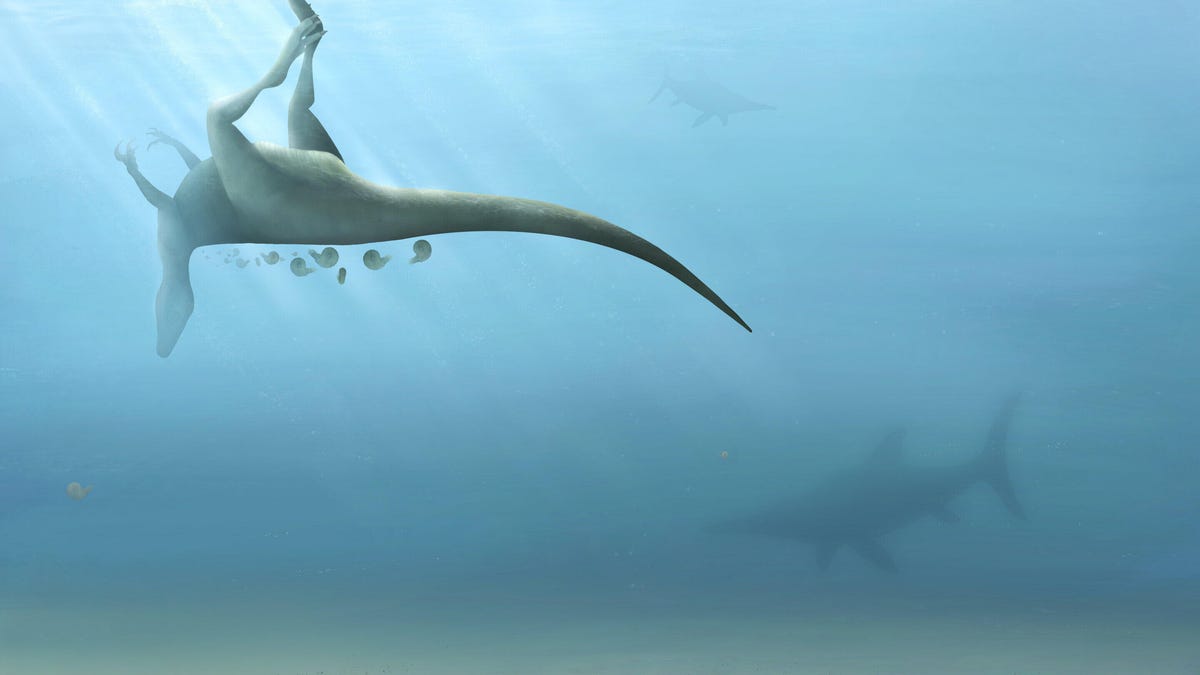T. Rex's 115-million-year-old British beach-bum cousin found
Shore-goers unearth a new member of the theropod family tree in the Isle of Wight.

An artist's impression of the dinosaur's final moments
Sometime around 115 million years ago, one of Tyrannosaurus Rex's previously unidentified cousins found its way south to the Shanklin shoreline on the British Isle of Wight for what would become its final holiday. And, according to the University of Southampton, if it weren't for the enterprising efforts of the isle's current-day vacationers, all knowledge of the newly discovered Theropod species, Vectaerovenator inopinatus, which likely lived a bit further north, might have stayed buried in that sandy beach.
The new carnivorous species, estimated to have been up to 4 meters long, surfaced after one family and two individuals discovered bones from Vectaerovenator's neck, back and tail. The discoverers handed over their finds to the nearby Dinosaur Isle Museum at Sandown. After studying the four vertebrae, the university's paleontologists confirmed Wednesday the bones likely belong to an entirely new genus of dinosaur.
Vacationing fossil hound Robin Ward and his family unearthed some of the bones.
"The joy of finding the bones we discovered was absolutely fantastic. I thought they were special and so took them along when we visited Dinosaur Isle Museum. They immediately knew these were something rare and asked if we could donate them to the museum to be fully researched," Ward said in a release from the University of Southampton.
Silhouette showing the positions of the bones
Vectaerovenator's discovery at Shanklin is out of the norm for dinosaur deposits, even on the fossil-rich Isle of Wight, according to the study's leader, Chris Barker. Even more out of the norm is the bones' composition.
"We were struck by just how hollow this animal was -- it's riddled with air spaces. Parts of its skeleton must have been rather delicate," he said in the release. "The record of theropod dinosaurs from the 'mid' Cretaceous period in Europe isn't that great, so it's been really exciting to be able to increase our understanding of the diversity of dinosaur species from this time."
Vectaerovenator's fossils will soon be on display at the Dinosaur Isle Museum. The find is slated to be detailed in an upcoming paper in the journal Papers in Palaeontology, co-authored by the shore-going citizen scientists who discovered the bones.
Read more: Horse-size T. rex probably not real, says dream-crushing study

